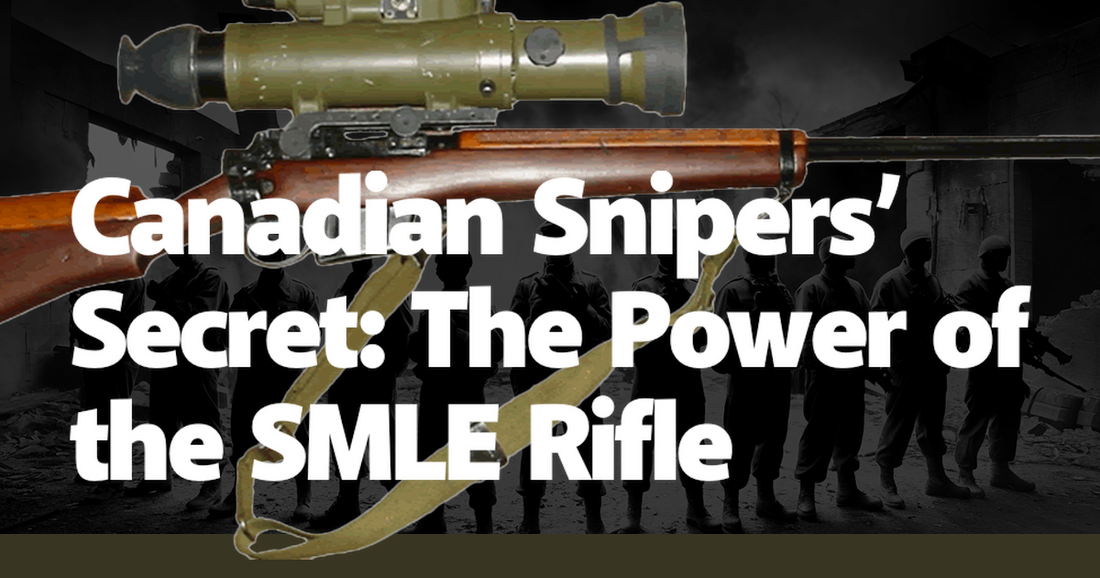In the annals of military history, the prowess of Canadian snipers is a subject of both awe and reverence. One of the lesser-known secrets behind their extraordinary success is the Short Magazine Lee-Enfield (SMLE) rifle. This seemingly unassuming weapon, with its distinctive bolt-action mechanism and storied legacy, played a pivotal role in the hands of Canadian marksmen. The SMLE rifle, introduced in the early 20th century, was not just a tool of war but a symbol of precision and reliability. Its design, which allowed for rapid cycling and a ten-round magazine, set it apart from contemporaries, making it a favorite among snipers who valued speed and accuracy.
The SMLE rifle's journey with Canadian snipers began during World War I, where the trenches of Europe became the proving grounds for its capabilities. Canadian snipers, often operating in the most perilous conditions, found the SMLE's robustness and reliability indispensable. Anecdotes from the front lines speak of snipers like Francis Pegahmagabow, an Indigenous Canadian soldier, who utilized the SMLE with lethal efficiency. Pegahmagabow's 378 confirmed kills and over 300 captures are a testament to the rifle's deadly effectiveness in skilled hands. The SMLE's ability to maintain accuracy over long distances, combined with its rapid rate of fire, provided Canadian snipers with a significant tactical advantage.
The design of the SMLE rifle was a marvel of engineering for its time. Its bolt-action mechanism was smooth and allowed for quick reloading, a crucial feature in the heat of battle. The rifle's ten-round magazine was another game-changer, enabling snipers to maintain a sustained rate of fire without frequent reloading. This was particularly advantageous in sniper duels or when providing cover for advancing troops. The SMLE's accuracy was further enhanced by its robust iron sights, which could be adjusted for windage and elevation, allowing snipers to make precise shots even under challenging conditions.
Canadian snipers were not just marksmen; they were masters of camouflage and stealth. The SMLE rifle complemented these skills perfectly. Its relatively compact size and manageable weight made it ideal for snipers who needed to remain mobile and undetected. The rifle's wooden stock and metal components were durable, capable of withstanding the harshest environments, from the muddy trenches of Flanders to the frozen landscapes of the Eastern Front. Snipers often personalized their SMLEs, adding custom cheek rests or modifying the sights to suit their preferences, further enhancing their effectiveness in the field.
The legacy of the SMLE rifle continued into World War II, where Canadian snipers once again demonstrated their exceptional skills on the global stage. The rifle's versatility was evident in various theaters of war, from the deserts of North Africa to the dense forests of Europe. Canadian snipers like Corporal Harold Marshall, who recorded an impressive number of enemy kills, relied on the SMLE's reliability and accuracy. The rifle's ability to perform in diverse environments made it an invaluable asset, ensuring that Canadian snipers could adapt to any situation and maintain their deadly precision.
Training played a crucial role in the effectiveness of Canadian snipers and their mastery of the SMLE rifle. Rigorous programs focused on marksmanship, fieldcraft, and the psychological aspects of sniping. Trainees spent countless hours honing their skills, learning to judge distance, account for wind, and remain patient under pressure. The SMLE rifle was an integral part of this training, with snipers developing an intimate familiarity with its mechanics and capabilities. This deep understanding of their weapon allowed Canadian snipers to exploit the SMLE's strengths fully, turning it into a formidable tool of war.
The impact of the SMLE rifle on Canadian sniping can still be felt today. Modern Canadian snipers, while equipped with advanced rifles and technology, owe a debt to the legacy of the SMLE. The principles of marksmanship, stealth, and adaptability that were honed with the SMLE continue to define the ethos of Canadian snipers. The rifle's storied history serves as a reminder of the ingenuity and resilience of those who wielded it, and its place in military history is secure as a symbol of precision and excellence.
In conclusion, the SMLE rifle was more than just a weapon; it was a force multiplier for Canadian snipers. Its innovative design, reliability, and adaptability made it an indispensable tool in the hands of skilled marksmen. The stories of Canadian snipers and their exploits with the SMLE are a testament to the rifle's enduring legacy. From the trenches of World War I to the battlefields of World War II, the SMLE rifle proved its worth time and again, cementing its place as a cornerstone of Canadian military history. The power of the SMLE rifle, combined with the skill and determination of Canadian snipers, created a formidable combination that left an indelible mark on the annals of warfare.

